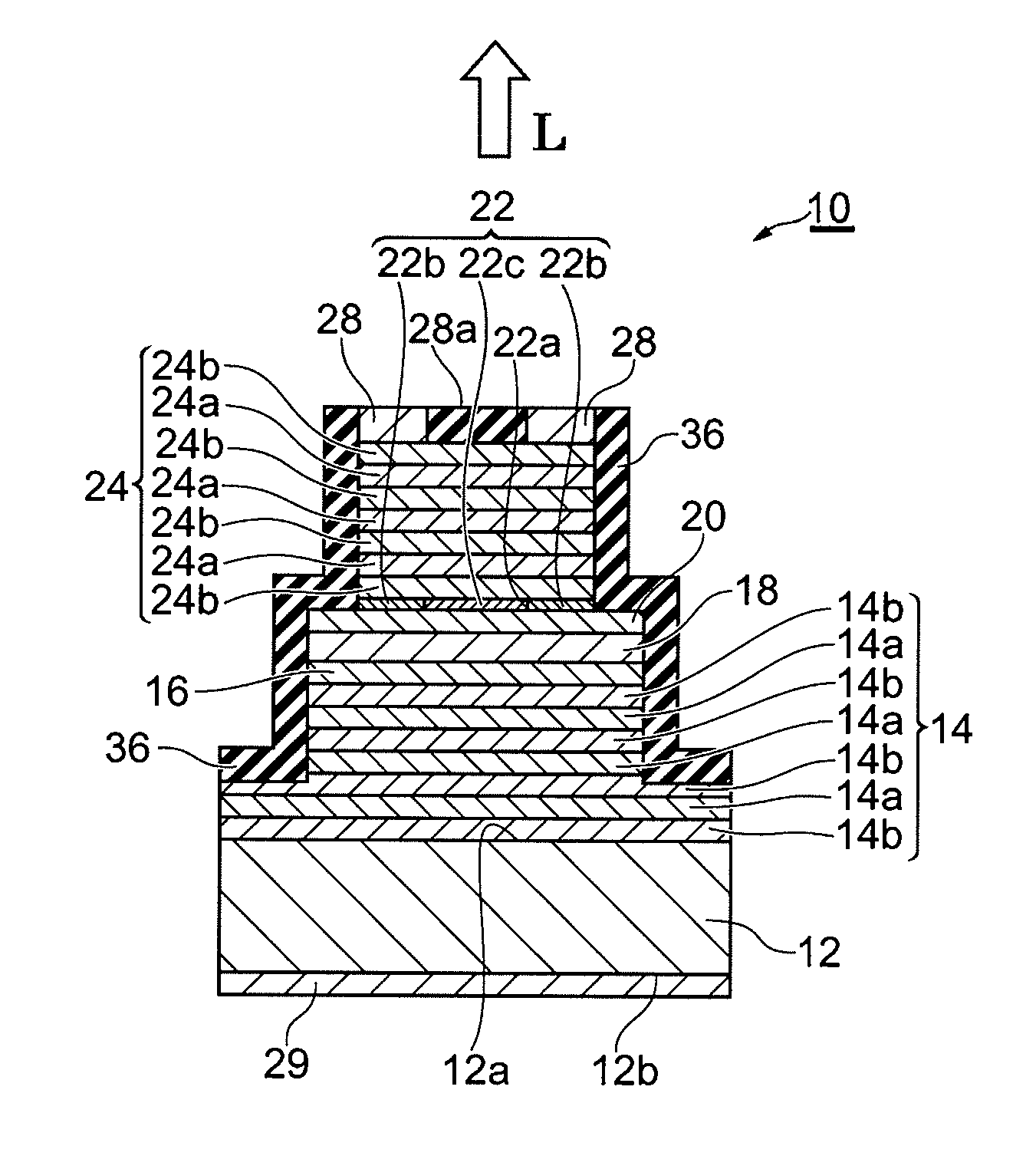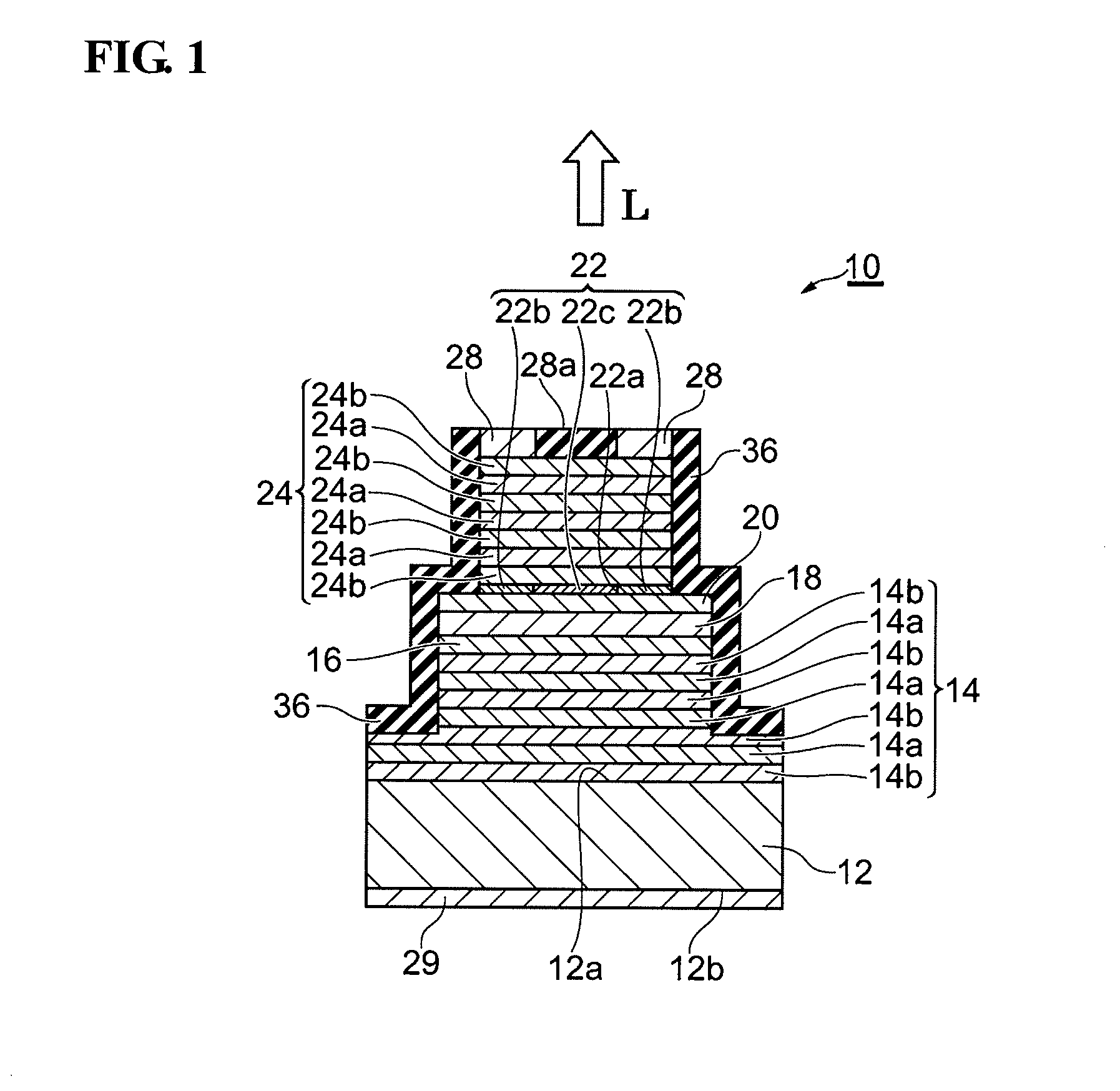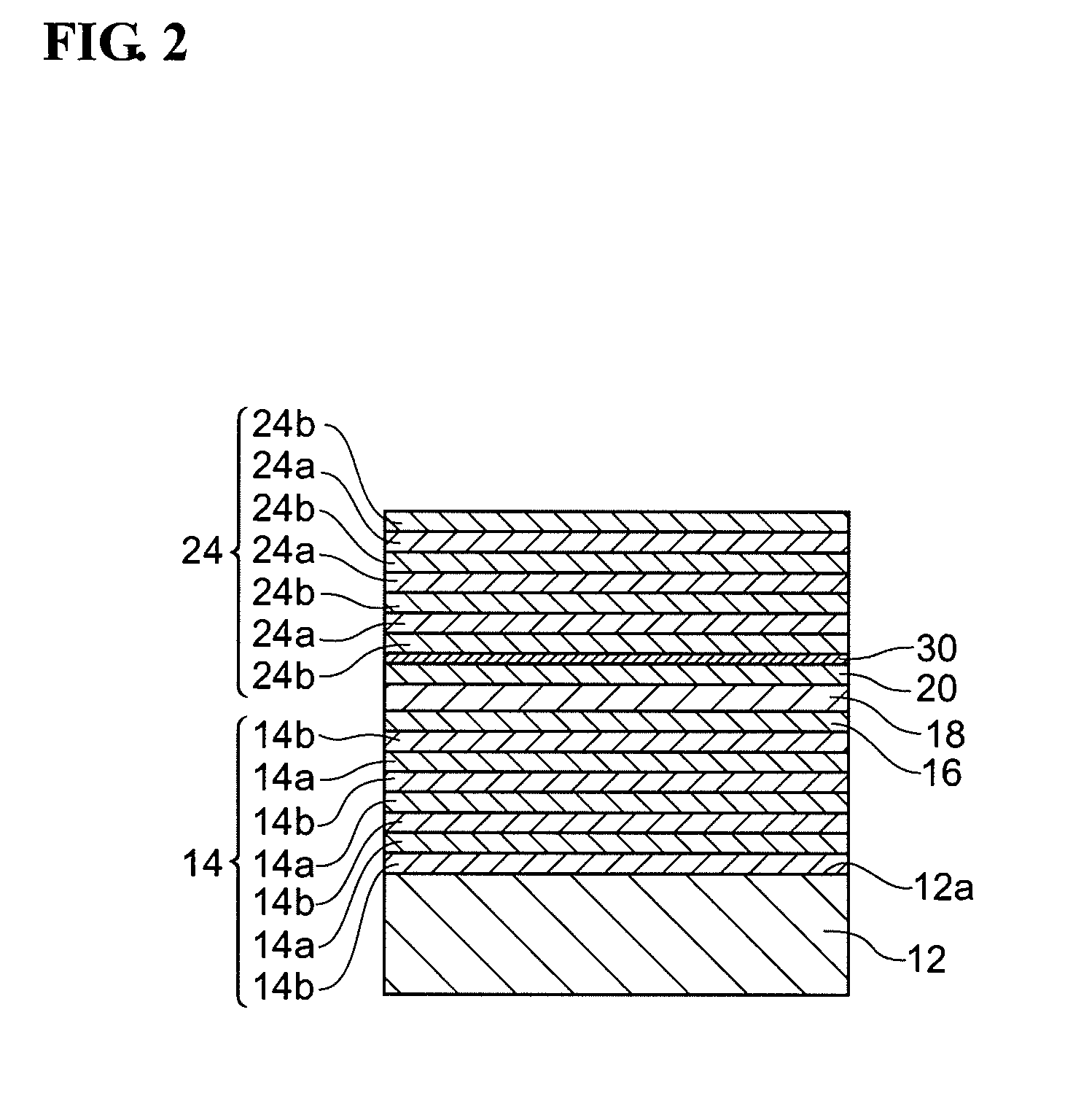Method for producing surface emitting semiconductor device
- Summary
- Abstract
- Description
- Claims
- Application Information
AI Technical Summary
Benefits of technology
Problems solved by technology
Method used
Image
Examples
Embodiment Construction
[0034]Embodiments of a method for producing a surface emitting semiconductor device according to the present invention will now be described in detail with reference to the accompanying drawings. In a description of the drawings, the same elements are assigned the same reference numerals and an overlapping description is omitted.
[0035]FIG. 1 is a cross-sectional side view of a surface emitting laser 10 which is an embodiment of a surface emitting semiconductor device produced by a method according to the present invention. The surface emitting laser 10 shown in FIG. 1 is a vertical cavity surface emitting laser (VCSEL), for example. In this embodiment, an emission direction of light L emitted from the surface emitting laser 10 is a direction perpendicular to a main surface 12a of a semiconductor substrate 12.
[0036]The surface emitting laser 10 includes a semiconductor substrate 12 of a first conductivity type, a first DBR portion 14 of the first conductivity type provided on the mai...
PUM
 Login to View More
Login to View More Abstract
Description
Claims
Application Information
 Login to View More
Login to View More - R&D
- Intellectual Property
- Life Sciences
- Materials
- Tech Scout
- Unparalleled Data Quality
- Higher Quality Content
- 60% Fewer Hallucinations
Browse by: Latest US Patents, China's latest patents, Technical Efficacy Thesaurus, Application Domain, Technology Topic, Popular Technical Reports.
© 2025 PatSnap. All rights reserved.Legal|Privacy policy|Modern Slavery Act Transparency Statement|Sitemap|About US| Contact US: help@patsnap.com



